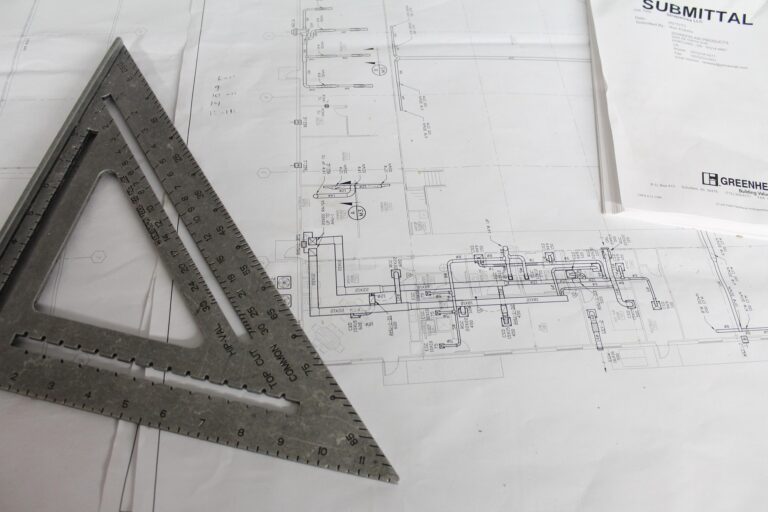
Originally posted by Inside Indiana Business on February 23, 2021.
Organizations typically focus on learning and fail to address unlearning as an organizational development strategy. Whether we realize it or not, we gravitate toward what is familiar and less challenging. But without taking the time to step back and reflect upon the ways in which we approach our work we could be sabotaging our own efforts. This applies to most changes we want to implement. Instead of trying to convince your team that your change effort is the right one, help them understand why it is important to change.
Instead of trying to convince your team that your change effort is the right one, help them understand why it is important to change.
At one security system services firm, the customer service team noticed a growth in calls about product consistency. In response to this disturbing trend, the chief technology officer decided to adopt a new element that upgraded the system. The intended benefits of this change—improved reliability and customer satisfaction—were appealing, but the cost to implement was substantial. Because the systems were already installed in residences, customer service would need to contact customers and request that they install a new module themselves. Customers would have to open the system tower, remove the existing module, and install a new module. Customer service representatives were skeptical that the modules could be successfully replaced by customers.
To address their concerns, the CTO sought feedback from a cross-functional group of senior and junior representatives, they asked: If customers could successfully change the modules themselves, what would the organization gain? Employees were asked to consider the proposed change and identify any potential problems. They were also asked to create solutions to potential problems. These conversations helped reduce resistance to the proposed change and increase support for leadership’s approach. In the end, the change was implemented, and team members were prepared to support customers throughout the module exchange. This approach contributed to the adoption of change and goal achievement in less time than had they not pursued discussion first. The organization’s culture was positively impacted, and management’s credibility strengthened.
The discussions encouraged by management were not simply exercises where employees were asked to discuss the upcoming changes among themselves prior to their implementation. Instead, the conversations were structured to help employees know their input in decision-making and change initiatives were valued. Typically, leaders attempt to roll out change initiatives because they are confident that they are right about the need for the change. They set out to convince employees they are right about the change, and seek to report back as quickly as possible to their leadership, that they have done what they could to achieve “buy-in.”
Unlearning Positions Employees to Embrace New Methods
Long-lasting change that achieves sought after results, comes from leaders acknowledging that they may not have all the answers and that they could benefit from the perspective of others. Leaders that use this approach are successful because rather than setting out to achieve buy-in, they set out to understand potential roadblocks and gather solutions from others. By having meaningful conversations with employees, they gain insight while testing and possibly refining the proposed change. The pursuit of compliance does not exist, nor is it necessary, because individuals are more willing to change when they understand why practices are established and under what conditions. The need for change becomes more apparent when this type of information is shared and understood. This practice of unlearning, of discarding practices or knowledge that are no longer relevant, position employees to learn new ways.
Overcome Challenges Associated with Change
Leaders struggle when they assume their way is the best way, they tend to approach change from the top down—they strive to appear decisive and knowledgeable. Talking points are created and other supporting leaders roll out initiatives in search of compliance. Early adopters are praised, and resisters identified. Dialogue about the change and potential problems is lacking and a small number of employees offer feedback. The limited amount of feedback enables leaders to assume acceptance and change are guaranteed.
To successfully implement change, leaders should take a slower approach when possible and assume they do not have all the answers. Too often we rush change initiatives only to discover we have offended key stakeholders or failed to have important conversations. Leaders need to start meaningful conversations and keep employees engaged. Conversations about key initiatives are not one and done. The key is to develop trust and work with others to understand assumptions and potential challenges.
When leaders fail to have meaningful conversations, they miss tapping into the very talent they hired. They sacrifice progress for adherence and miss having valuable conversations that can improve engagement and strengthen culture. When the need for change is apparent, employees can discard practices and knowledge that are no longer relevant and fully embrace new policies and practices.


Originally posted by Inside Indiana Business on October 29, 2020.
As organizations adapt to change brought about by the pandemic, many contemplate how long it will take for our world to return to normal.
Normal will be what we make of it. Our former ways of living and working have evolved in many ways to ensure public health is taken into consideration. What we used to consider normal may be forever altered. But I believe there are opportunities awaiting individuals and organizations that are worth exploring.
First, I’ve heard of many organizations who have successfully adjusted rapidly to change during the pandemic. They discovered that their teams were willing and eager to change their behavior when they believe doing so aligned with the organization’s purpose and livelihood. When this openness to change combines with people believing change is possible, change efforts can create powerful momentum. Early wins with tangible progress can be leveraged and practices put in place to sustain change. Eventually, desire for change needs translated into new guidelines and practices, and during times of unprecedented uncertainty, that only happens with effective leadership.
Additionally, it’s critical for us to understand which aspects of change we should embrace to support organizational development. When we think about change, many of us focus on what needs changed in the near term. And yes, we should act to support continued revenue and employment, but we should also enable the longer-term sustainability of our communities and society. But the leaders with the potential to impact meaningful progress may be ill-prepared to make decisions and implement the needed changes. We need to prepare them now.
Second, organizational learning influences performance. Maintenance learning is for organizations who want to maintain the status quo. It is not uncommon for organizations to connect learning and development activities to performance evaluations and other measures. This practice often fails to account for the performance required to successfully navigate change. Maintenance learning addresses growth and learning related to performance gaps and anticipated activities. It doesn’t address developing the skills and abilities needed to adjust rapidly to change, embrace failure as a means of learning, or how to use design thinking to rapidly make ideas a reality.
Maintenance learning is inadequate for competitive organizations or even for organizations that simply want to survive or thrive during times of unparalleled change. Maintenance learning prepares us for adjusting to circumstances as they are, not how they will be. If we want our organizations to evolve effectively, we must use a combination of maintenance learning with innovative learning practices.
It’s leaders and executive teams that decide how organizations prepare for and adapt to change. It’s directors and managers that work with individuals and teams to implement changes. Ultimately, it’s individual and team performance that impacts the position of the organization within the market. In some cases, leaders lack the vision to guide the organization in both the short-and long-term. Unfortunately, in such cases morale may suffer, especially among teams and individual employees—which makes sense given decisions made by leaders impact all levels within organizations.
The bottom line is this: opportunity exists to make meaningful progress in spite of the pandemic. If we want to future-proof our organizations, then we have to ensure our employees are prepared to thrive given their current responsibilities. We also have to prepare them to face the challenges and changes that will occur in the future. This involves ensuring our cultures embrace innovative learning—learning that supports the embrace of failure, collaboration to solve problems, and design thinking to rapidly make ideas a reality.
Finally, we need to be specific about the expectations for leaders. While the needs of organizations differ, some may need a leader to provide continuity and guidance in the near term and others may seek visionary leadership who can bolster short-term stability while preparing the organization to withstand turbulent conditions in the future. Every board should have established expectations for the organization’s leadership. Defining expectations that address the near term and the future, using data to inform decision-making, and ensuring the leader is the most qualified, appropriate fit for the position.
The past several months have proven challenging for us—the uncertainty, stress, and fear about the future have been intensified by the need to make decisions quickly, often with limited information or without precedent. The stories of countless organizations who have implemented changes quickly, while focusing on employee and customer safety, give me reason to be hopeful. If we can use leadership and learning as elements that help us endure challenging times, then this time in our history can be one that offers tremendous potential for individuals and organizations.
Tuesday Strong is a coach, consultant, and author at Strong Performance Management, LLC.

Proactive Performance Management
When I started in management, I was focused on ensuring my team understood goals and expectations. Equally important, was knowing that each team member had access to the training they needed to do their jobs well. By the time I left that organization five years later, I was addicted to proactive performance management. Since then, I continued to hone my skills and help others develop. The more I helped others, the more I realized—if I can help others grow, I have made a important contribution.
Helping others comes naturally for some. Over time, we realize one of the most significant things we can do is help others. That’s why I love lifelong learning. It helps position us with the skillset and mindset to realize challenging goals.
When we recognize the limits imposed by lack of development, we can proactively seek learning opportunities. As a new manager, you’ll need to consider the following five critical aspects of performance management to help others learn and realize goals.
Communicate goals and expectations.
Give your team the information they need to understand what’s expected of them. This may involve your investing extra time to communicate with them as a group and with each team member individually. Instead of hurrying through this task, invest the time to ensure each team member understands the team’s goals and their individual goals.
Stephen Covey said that, “We are the creative force of our life, and through our own decisions rather than our conditions, if we carefully learn to do certain things, we can accomplish those goals.” This indicates the need for managers to give employees the information they need so they can make the decisions to realize goals.
Managers need to communicate goals and expectations clearly and in a timely manner so employees understand what’s expected of them and what resources are available to support their efforts.
Ensure employees have the training they need to do their jobs well.
I have often said that employees cannot be expected to meet or exceed expectations without guidance and preparation. To increase the likelihood that employees will actually accomplish their goals, you need to understand their strengths and challenges and give them the opportunity to improve in the areas that may hamper their performance. Preparation enables progress. Give them the training they need to do their jobs well.
Use coaching to keep employees motivated and on track.
Through coaching, employees are empowered to make decisions and change behaviors that result in immediate impact. Managers help by encouraging employees to take ownership of goals and create the habits that are aligned with their objectives. Through questions and frequent two-way communication, new levels of awareness can result. Managers use coaching to help employees understand how best to leverage their strengths while overcoming obstacles. They offer support and guidance to keep employees motivated and on track.
Communicate proactively and effectively.
For employees to achieve goals, you must communicate effectively. Some new managers don’t invest enough time or energy into getting this right. That’s a big mistake. Usually one that hurts performance and morale. Knowing how to communicate proactively will enable your team to make progress toward achieving goals.
I’ll share an example. Several years ago, I learned of a manager who was tasked with rallying support for a new stretch goal the team was responsible for achieving. Instead of simply focusing on the implementation of the new machinery, management needed to gain support from the employees who would actually use the machines. In this case, not only did the new machinery require learning how the machines functioned, it also required the adoption of new processes and policies to support their implementation. Production, customer satisfaction, and a return on the investment were all at stake.
Management succeeded in gaining employee support because they communicated not only how the new machines would be used, but also why the new machines and supporting processes were necessary. They communicated in advance of the installation of the machines, giving employees the opportunity to ask clarifying questions and understand why the installation of the new machines was necessary.
Recognize effort and progress.
Employees need to know that their efforts are important. When their work is recognized, they know their work is valued by others. This in turn, has a positive impact on future performance and morale. Managers miss opportunities when they only acknowledge success. Failure is just as important. We learn from our mistakes and use that learning to make better decisions in the future.
Failure can be painful but it can also be extremely valuable. When we fail, we realize that we have options and new opportunities. Our failures help us grow personally and professionally. We feel the pain of failure in the short-term even though we may benefit greatly from it in the longer term. When we fail, we get feedback and the feedback helps us learn and grow. Then we iterate, we make changes, and try again. If we fail again, we learn more and begin the process anew. Our learning and confidence grow throughout the process.
Now that you understand the five critical aspects of performance management, you can help your team embrace challenging goals.
Effectively managing performance is a skill. Your team can either sink or swim depending upon how well you guide and support them. As you develop your skills, be deliberate about your learning. Challenge yourself to develop both the skillset and mindset to manage with confidence. Being a new manager can be difficult. Failing to grow and properly support your team can be even harder.


Effective Planning Can Result in Progress
Many talented executives fail to fully appreciate strategic planning. The problem is they’ve not witnessed the progress that effective planning can help materialize. The unseen reason for their lack of optimism is minimal experience creating and implementing strategic plans.
When strategic plans are created time is usually tight, with the goal of producing a plan on a timeline in addition to normal workloads. A lot of executives just want to get through the process as quickly as possible.
Strategic Planning Must Be Approached Intentionally
Strategic planning must be approached intentionally because engaging an organization creates risk if leaders are unprepared. A lack of preparation or even the appearance of it, can set a negative tone for the entire process.
Broad organizational involvement creates opportunities to learn together and build community. With this in mind, leaders can use the opportunity to reinforce culture and gain support for challenging goals.
Because the strategic planning process is so detailed, it’s easy to make mistakes. Here are four costly strategic planning mistakes to keep in mind as you develop your plans.
Not maximizing visionary leadership. In addition to setting the long-term vision for the organization, the leader should ensure more of an emphasis on innovative learning than on maintenance learning. The practice of maintenance learning addresses learning related to performance gaps and anticipated activities. It doesn’t address developing the skills and abilities needed to adjust rapidly to change, embrace failure as a means of learning, or how to use design thinking to rapidly make ideas a reality. Maintenance learning prepares us for adjusting to circumstances as they are, not how they will be.
Looking inward instead of outward. Changes in the external market should be anticipated. At the onset of the planning process, an environmental scan will prove critical to accurately assess the factors with the potential to impact planning. Organizations that fail to assess external conditions and potential, position themselves to miss opportunities to retain current customers, expand sales to existing customers, or acquire new customers.
Not investing in the resources needed to achieve goals. Too many times challenging goals are set without a thorough risk assessment or realistic estimate of the resources needed to achieve established goals. Failure to estimate resource needs can result in increased costs, conflict, or missed deadlines and opportunities.
Not securing buy-in. A failure to secure broad support for strategic plans can damage morale and performance. Leaders need to be change agents and effective marketers with domain level expertise who can synthesize large amounts of information and sell ideas throughout the organization.
The goal is to create a strategic plan that represents your organization’s aspirations. A clear and concise plan informed by data and created with stakeholder insight, positions your organization for progress. As you begin to work on your next strategic plan ask yourself, “how many of these costly strategic planning mistakes are we making?”


Not All Leaders Are Prepared to Lead
If you’ve recently found yourself frustrated and confused by leadership, you’re not alone. Being able to take charge during periods of rapid change and deal effectively with ambiguity are key competencies needed in today’s leaders.
We need individuals who are decisive, trustworthy, and capable of creating solutions today that position us for the future. We need empathetic leaders who understand that local actions may have global implications.
Unfortunately, not all leaders are prepared to lead. The same reasons that contributed their assuming leadership positions may make it even more difficult for them to lead.
Subject matter or domain specific expertise, relationships, or even urgent needs to fill vacancies, are a few of the reasons that individuals are placed in leadership positions within short time frames. Organizational culture, inadequate search processes, or other internal challenges may also contribute to unqualified individuals being placed in leadership positions. While many may aspire to leadership, not all are prepared to lead.
Organizations need sound leadership now; they cannot always wait for individuals to grow and develop in anticipation of assuming leadership positions.
Organizations don’t always have the luxury of time; many will learn by doing.
Mistakes by new leaders are more likely to occur in the absence of mentors and developmental opportunities. Performance will suffer in those who lack emotional intelligence and the ability to think strategically and operationally. The result, all too often, is the loss of talent or market share.
Here are some practices that will improve confidence and performance so you can secure and develop the talent needed for sound leadership.
Update Competency Models
Yesterday’s leadership competency models are inadequate to meet today’s needs. The pace of change and the dynamics of our global public health crisis and economy, force organizations to rethink and update how individuals are hired, promoted, and retained.
Leadership competency models must address strategic communication, navigating ambiguity, and leadership development. Equally important is innovative learning that addresses being proactive rather than reactive, learning by gathering insight from others, using collaboration to solve problems, and preparing for anticipated change.
Focus on Innovative Learning
It is not uncommon for organizations to connect learning and development activities to performance evaluations. This practice fails to account for the performance required to successfully navigate change.
The practice of maintenance learning addresses growth and learning related to performance gaps and anticipated activities. It doesn’t address developing the skills and abilities needed to adjust rapidly to change, embrace failure as a means of learning, or how to use design thinking to rapidly make ideas a reality.
Maintenance learning is inadequate for competitive organizations or even for organizations that simply want to survive or thrive during times of unprecedented change. Maintenance learning prepares us for adjusting to circumstances as they are, not how they will be.
The elements of innovative learning include being proactive rather than reactive, learning by gathering insight from others, and using collaboration to solve problems and prepare for anticipated change.
Innovative learning involves understanding and recognizing the value of current circumstances while proactively using learning to make the future a reality.
Fast Track High Potential Leaders
Talking with high potential leaders can help you better understand their interests and motivation. You may discover a willingness to learn more about other areas of the organization or a desire to take on more responsibility. If so, you can offer stretch assignments or have them participate on cross-functional teams.
Once you understand their aspirations, you can work together on career planning and determine if additional internal developmental opportunities would be appropriate. You may also want to supplement internal activities with external learning.
As roles evolve, it’s important to not overload potential leaders with additional responsibilities and tasks without consideration of current workloads. Remove lower level work so they do not become overwhelmed. Gather feedback as they work through new tasks and identify any gaps in their capabilities, then offer additional developmental opportunities.


Maintenance Learning is for Organizations Who Want to Maintain the Status Quo
It is not uncommon for organizations to connect learning and development activities to performance evaluations. This practice fails to account for the performance required to successfully navigate change. The practice of maintenance learning addresses growth and learning related to performance gaps and anticipated activities. It doesn’t address developing the skills and abilities needed to adjust rapidly to change, embrace failure as a means of learning, or how to use design thinking to rapidly make ideas a reality.
Maintenance learning is inadequate for competitive organizations or even for organizations that simply want to survive or thrive during times of unprecedented change. Maintenance learning prepares us for adjusting to circumstances as they are, not how they will be.
You work hard to get products and services out into the world. The important question is whether you’ll do it effectively.
Keep reading to learn three ways leaders can infuse innovative learning throughout organizations to prepare for change.
Adjust rapidly to change.
People are willing and often eager to change their behavior when they believe doing so aligns with the organization’s purpose. When this openness to change combines with people believing change is possible, change efforts can create powerful momentum. Early wins with tangible progress, can be leveraged and practices put in place to sustain change. Notice this approach offers an alternate path to the way in which many change initiatives begin—it starts with the people collectively believing in the change, rather than top down directed change efforts.
Embrace failure as a means of learning.
Failure can be painful but it can also be extremely valuable. When we fail, we realize that we have options and new opportunities. Our failures help us grow personally and professionally. We feel the pain of failure in the short-term even though we may benefit greatly from it in the longer term. When we fail, we get feedback and the feedback helps us learn and grow. Then we iterate, we make changes and try again. If we fail again, we learn more and begin the process anew. Our learning and confidence grow throughout the process.
Use design thinking to rapidly make ideas a reality.
Design thinking can be effective because it promotes a collaborative approach to solving problems. Ideas that solve problems in unique ways result from people coming together to brainstorm. That’s where design thinking comes in, it involves bringing multiple people together and encouraging them to use their diversity of experience to solve problems. This way of working is commonly used to solve customer challenges or meet customer needs, but it can also be effective in solving internal problems and creating new practices to support improved operations and organizational progress.
Being able to adjust rapidly to change, embracing failure as a means of learning, and using design thinking to rapidly make ideas a reality, are practices that encourage learning in new ways and when combined, they have the power to impact organizational culture and influence performance.
Elements of Innovative Learning
The elements of innovative learning include being proactive rather than reactive, learning by gathering insight from others, and using collaboration to solve problems and prepare for anticipated change. Innovative learning involves understanding and recognizing the value of current circumstances while proactively using learning to make the future a reality.




